#second edition
Photo

AD&D 2E Monstrous Compendium - Hydra - Outnumbered 10 to 1 by Ken Widing
#Dungeons and Dragons#Dungeons & Dragons#D&D#Advanced Dungeons & Dragons#AD&D#Second Edition#Hydra#Monstrous Compendium#Ken Widing#Fantasy#Art
265 notes
·
View notes
Text
I think about how 2nd edition had so many fun ravenloft and shadowfell additions.
The story of how there is a domain where Strahd had done a kingdom hearts and separated his humanity from his body and he finds out his humanity is a fully formed human man living a beautiful pastural life w/ a partner and little farm.
Where is this energy for 5e?
32 notes
·
View notes
Text
I FOUND THESE IN MY GRANDMA'S LIBRARY

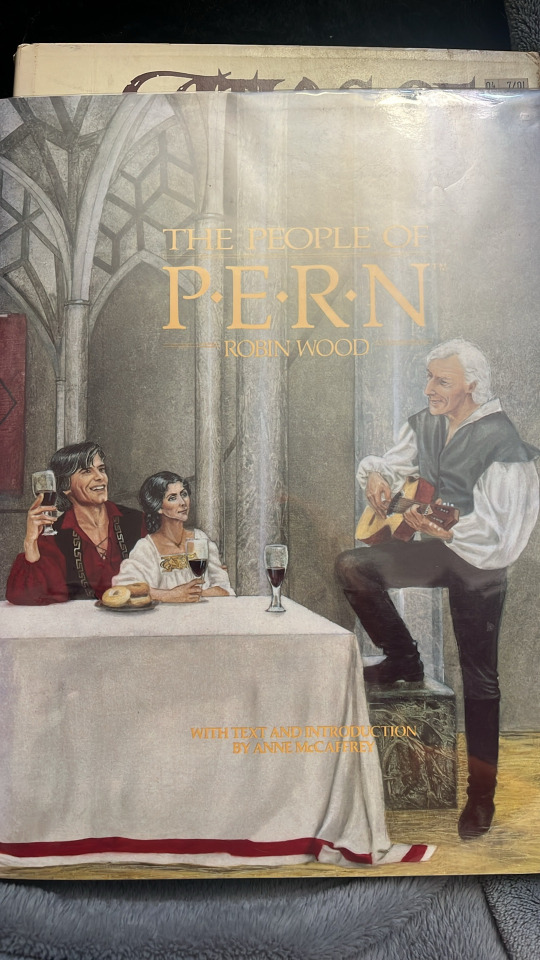

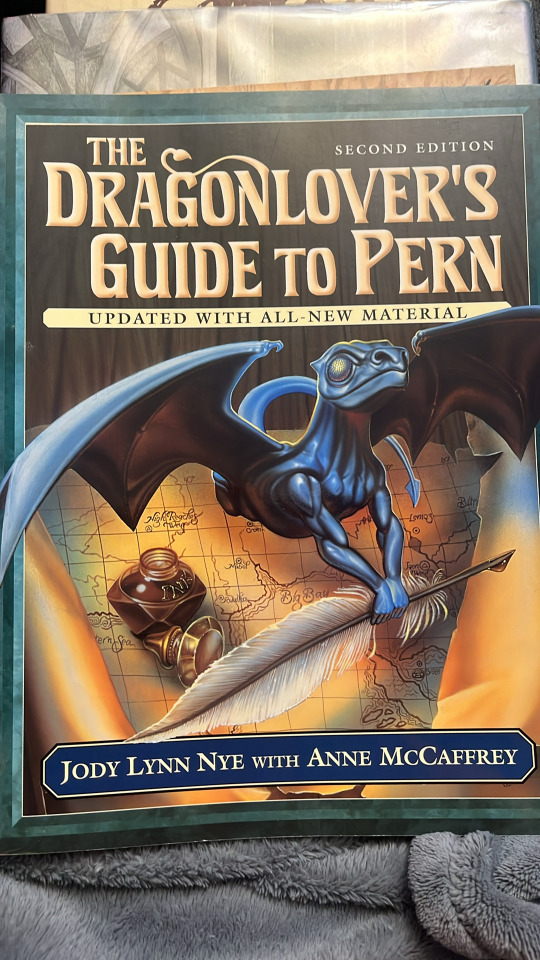
These help add so much depth to the series I grew up listening to and reading. Is the series flawed? Heavily. But I love it nonetheless.
I was 6 was my grandma started reading the books to me. She gave me all of her Pern books and its a series we both love. So finding these hidden deeper in her library right next to the holy bible was great lmaoo
27 notes
·
View notes
Text


The collaborative map my new Pathfinder group made using The Quiet Year, vs. the redone version I made in Inkarnate!
I'm going to keep adjusting it and adding to it as we get into the game, but this was a lot of fun to do and create with my players!
#The quiet year#pathfinder#map#ttrpg#world maps#island#fantasy world#pathfinder 2e#inkarnate#cartography#desert#level 0#session 0#collaborative#second edition#pf2#collaborative storytelling#maps
10 notes
·
View notes
Text

@mando-be-beskar
Here is what a full chapter looks like in the codex 😅
(I will not be attempting this)
#ultramarines#warhammer 40k#40k#warhammer#old warhammer stuff#retro gaming#space marines#second edition
49 notes
·
View notes
Photo




(via *PLANESCAPE*)
9 notes
·
View notes
Text
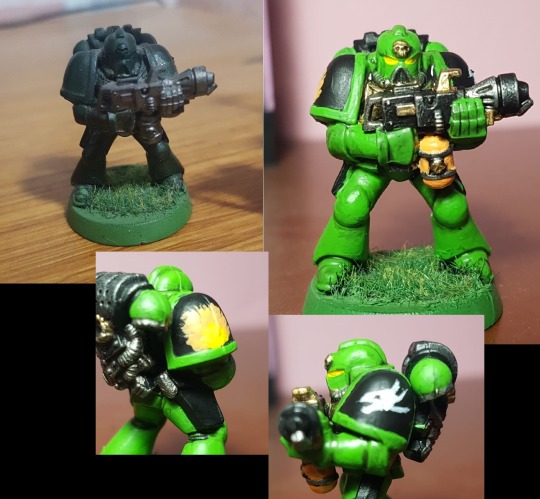
I found this fella from the 1992 (Second edition) getting dusty in a store shelf, and seeing that it was primed in green and carrying a flamethrower, I bestowed him with the rank of Salamander.
8 notes
·
View notes
Text
The other day I got some 2nd edd action in. Only a small game.

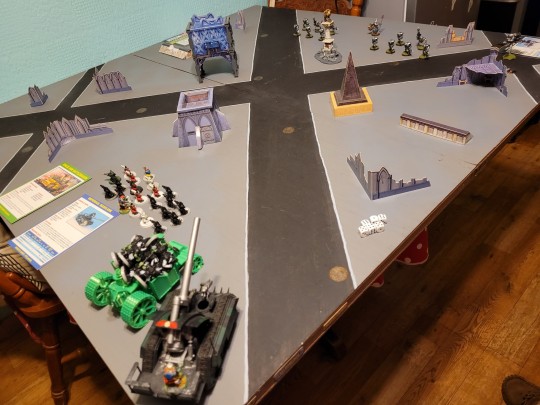
My Necrons v my friends Space Orks.


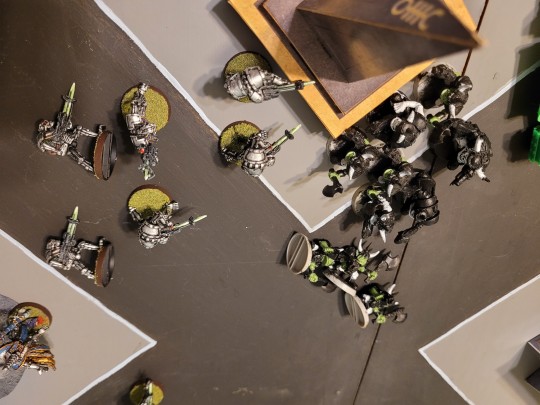

The game was going well after a slow start. It was only after I got into Hand to Hand that my Necrons began to shine.


On the verge of victory I rolled my faze out diec and several of my downd troops disappeared, taking my loses over 25%! My entire force then fazed out giving the win to the Orks.
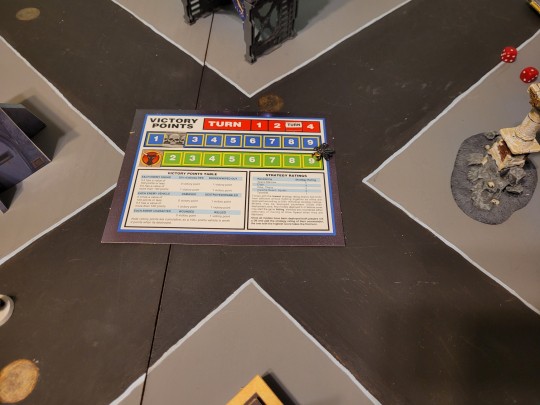
Victory was handed to the Ork Goffs.
#games workshop#warhammer 40k#warhammer 40000#warhammer40k#warhammer#space orcs#space orks#goff ork#ork goffs#necrons#second edition#2nd edition warhammer 40k#2nd edition#2nd ed
7 notes
·
View notes
Text
Old book, new edition! Get your copy of the updated Shoemaker Prince today!
#writing#fairy tales#books#my writing#reading#fairy tale retellings#wax heart press#the shoemaker prince#second edition#new release#small press#indie press#indie author
3 notes
·
View notes
Text
Fantasy AGE 2e! The Review!
Back in 2017, I stumbled over Fantasy AGE, a 3d6 based fantasy tabletop RPG by Green Ronin. I was all in. It was the breath of fresh air I needed from D&D and D&D-esque games. I even featured it a few times in articles about games to try or alternatives to D&D. So when I heard there was a 2nd edition coming, I knew that I had to check it out!
Continue reading Untitled

View On WordPress
3 notes
·
View notes
Video
youtube
Keith Levene, the original guitarist for PiL, passed away on 11/11. He was a pioneering guitarist, best known for his work on their first three records. Although his stabbing, chirping, twangy, super treble-y tone on Metal Box is what he will be remembered for, I always go back to the catchy riffing and “solo” he played on First Issue’s “Public Image.”
#Public Image Limited#Public Image Ltd.#first issue#public image#John Lydon#johnny rotten#keith levene#jah wobble#metal box#second edition
7 notes
·
View notes
Text
Get to know me better / Ask Game
Thank you @chojrak-making-things and @lordressdragoonbear for tagging me!!! 🥰 😘
--------------------------------------------------------------------------
Favorite color: All colors except black and brown, but I’m alternating between vibrancy and pastels, depending on my mood.
Favorite Video Game: The Sims 3 (lol, not obvious at all 😜 )
Currently reading: Years ago I wrote some (sims) stories. While many of them have been lost during the Great-HDD-Failure-of-Nov-20, there’s a few that survived. I’m revisiting them now and despite my expectation I still like them.
Last song: Pink - So What
Last series: None.
Sweet, spicy or savory: Sweet & savory.
Craving: Always chocolate.
Tea or coffee: Coffee.
Currently working on: Ugh, don’t even 😁 Maybe I’ll manage to post some bits of my projects (and even finish some), though there’s slim chances for that to happen because RL...
edit: I’m also playing -though inconsistently- the Cosmic Legacy Challenge.
#tag game#get to know me#ask game#second edition#because i did this before#but happy to go through these Qs again
11 notes
·
View notes
Text
Wish
Context: Our party consisting of me, @tanakavox, and two of our other friends we’re dungeon crawling in Pathfinder when we stumble upon a Genie(That talked like a stereotypical Texan) that was trapped. After freeing him, he offered a singular wish to one of us, but made it two wishes when out other party members declined, leaving the wishes to me and Tanaka.
Tanaka’s (In character): “This is going to sound like a weird request, but uh... I’d like to wish for my mom to stop nagging me about bringing a girl home.”
Texan Genie: “You got it partner! From this day forward, you’ll never hear your mama complaining about you bringing home a nice little lady to settle down ever again!”
Tanaka’s (IC) : “Yes, Finally! I won’t have to hear her nag me about settling down ever again!
Me (IC): *Shit eating smirk* “Yeah, that’s right partner. Now you’ll just have to hear her nag you to death about something else”
Tanaka (IC): “...Ah damnit!””
10 notes
·
View notes
Text

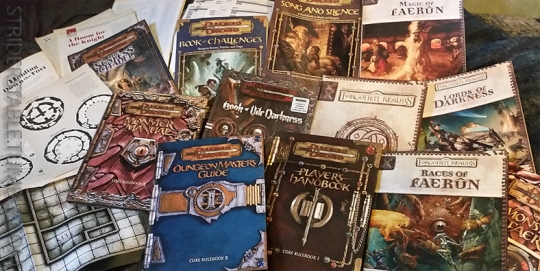
[id: a set of two photographs. the first is of seven dungeons and dragons rulebooks fanned out on a wooden deck. the titles are, top from left to right: advanced dungeons and dragons unearthed arcana, first edition dungeon master's guide and player's handbook, and legends and lore; bottom left to right: greyhawk: gem of the flanaess, second edition player's handbook and dungeon master's guide. the second photograph is of a pile of more numerous dungeons and dragons materials spread out on a quilt or blanket, including some magazine clippings, the sunless citadel adventure module, book of challenges, song and silence, magic of faerun, third edition monster manual, book of vile darkness, forgotten realms campaign setting, lords of darkness, third edition dungeon master's guide and player's handbook, races of faerun, and monster compendium: monsters of faerun. /end id]
Some of my pre-5e D&D materials from back in the day.
#dungeons and dragons#dnd#ttrpg#old dnd stuff#adnd#first edition#second edition#third edition#nostalgia#photos#my posts
5 notes
·
View notes
Text
Mimics & Pseudomimics
Allow me to present the core concept of the “Mimicverse” campaign setting I’ve been developing for the game of PF2E I’ve been running for the last six months or so. It’s been a lot of fun, and I’ve been writing too much deep lore for it to just keep it to myself and my players. There's a whole folder now. I may have a problem...
Anyways, here we go:
Mimics are not naturally-occurring beings.
When a living mind creates something, they imprint it with their intent. When you make a sword, you don’t just hammer the hot steel into the shape of a sword, you beat the concept of ‘this is a sword’ into it, and that intent crystalizes. When a being sees, or rather, perceives, a sword and recognizes ‘that is a sword’, that recognition harmonizes with the intent it was created with. When a being uses an object, cares for it, studies it closely, appreciates it, or puts in effort to maintain it, their attention and focus harmonizes strongly with its intent and can help crystallize it further. Mass-produced objects generally have weaker intent, and things like bricks generally have weak but very stable intent.
Objects with strong intent never really forget their initial intent, but if that intent isn’t harmonized, if they go without being recognized or cared for for too long… they have no brain, but they begin to feel things, they begin to crave recognition, harmonization. Their physical forms begin to warp, subtly at first, and this is often mistaken for simple decay. Longer, and their form begins to change more dramatically, they need harmonization, they need to find people to recognize them and see them and use them, so they change to be able to do that. They develop senses, they begin to move. How is always different, but they always seek to maintain the appearance of their original form. One sword may split down the middle and walk on two bladed ‘legs’. Another might bend and slither like a serpent. Another might extend insectoid limbs from its hilt and drag its blade behind it. In this stage, these objects are known as pseudomimics and are generally quite friendly, though extremely simple-minded. They crave harmonization, and will generally try to conceal their abnormal traits, pretending to be mundane objects, though they do tend to move around when not being watched, and often will follow people around, trying to be noticed. While objects with weak intent can go through the same process, it generally takes them much longer, and often they succumb to weathering before it’s possible. Sometimes, however, many objects of weak intent, such as boards or bricks, that are used together in a structure or a ship will meld their intent together and become a colony pseudomimic, or even a true mimic.
These pseudomimics bond with their users over time with use, developing loyalty and trust, and eventually, they may relax enough to allow their abnormal traits to be noticed by their owner, even using them to help with their use where possible. A sword that slithers may bend itself to turn a near miss into a hit, where one with legs in the guard might cling to its owner’s hand to resist being disarmed. Pseudomimics favor the company of those who have cared for them in the past, and a well-cared-for pseudomimic may return to its original owner if lost or stolen, or even attack someone trying to take them from their owner.
An important note is that life and magic are fundamentally intertwined- wholly inert objects cannot be permanently imbued with magic. Spells can affect objects, but any enchantments bound to an inert object will invariably begin to lose strength within a year. Pseudomimics, however, and true mimics as well, are capable of being enchanted permanently. This form of enchanting alters the intent of the item in ways that are impossible for a mundane object to fulfill, and the pseudomimic will adapt to this new intent, manifesting arcane potential or new traits. A thrown weapon enchanted to return to its wielder may grow wings or levitate to accomplish its new intent, whereas one enchanted with fire may simply glow red-hot in battle or it may spit gouts of flame when it strikes a target. Pseuodomimics that are well-maintained may, occasionally, develop magical properties spontaneously when exposed to powerful magical forces- a pseudomimic sword that was driven through an ice genie’s heart may develop ice properties, while pseudomimic armor that survived being bathed in the breath of a dragon might gain fire resistance.
If a pseudomimic cannot get the harmonization it needs, if it is trapped or isolated away from people for too long, its intent decays, and it becomes a true mimic, and its shape becomes less stable, its abnormal traits more pronounced. Now, recognition is no longer something they want, but being recognized as something OTHER than their original intent, most notably, being recognized as a mimic, causes them discomfort or even pain. Most will simply continue to pretend to be their original form when discovered, but, like any wild animal, they may lash out if you get too close to them. Some flee when discovered, but others lash out aggressively, attacking anyone who realizes their true nature. Some will even pursue those who have seen their true nature relentlessly, hunting them down until their existence is once again forgotten and the pain stops.
It is possible to animate a mundane item as a pseudomimic by forcing magical energy into an inanimate object, much the same way one might animate a construct, but there are…complications. Investing the wrong amount of magical energy into the casting can have unfortunate consequences- too little, and the object may not animate at all- too much, and it may destabilize its intent to the point that it becomes a true mimic. The amount depends on the object's condition, the workmanship, and the strength of its intent. Furthermore, when used for a temporary enhancement, there's a risk that the effect will wear off while the object is not imitating its original form exactly- for example, a sword may disanimate while bending, making itself less effective afterward. The magic ritual required to awaken a pseudomimic on a permanent basis require significant time and materials. However, it allows the caster to reduce the risk of accidentally over- or under-investing in the spell, firstly by guaranteeing them time to become familiar with the object before the casting, and by drawing out the investment process- they can adjust the amount of magic they apply on the fly, increasing it if the object is not animating as quickly as expected, and decreasing it if it animates too quickly so as to avoid ending up with a mimic. That said, the risk is lower, but never zero- it's not uncommon to see such enchanters with scars or missing fingers from an animation gone wrong. If such an animation goes VERY wrong and the resulting mimic escapes, it may become a serious threat to the public, as well!
Those in the business of magic items may ‘farm’ pseudomimics to reduce the initial costs of enchanting, by buying normal items and hiding them away for a time so that their intent begins to decay, and thus, becomes malleable enough to enchant. The individuals who do so are known as 'cultivitae' or 'vitay' for short. The process can be extremely profitable if done well, and it does not require any measure of formal training or magical ability, so some may turn to trying such things in times of desperation. The difficult part is judging how long it will take for an object’s intent to decay enough to become a pseudomimic, but not enough for it to become a true mimic. Some will bury objects in chests or jars, or hide them in caves and abandoned buildings, ensuring that nobody can interrupt the process of deharmonization while protecting the item from the elements, but this comes with the risk that the container will also deharmonize, and, if used too many times, become a true mimic and attack the cultivitae. Some will store large groups of items in small sheds, or sealed storage rooms within a larger ‘mimic barn’. This can be dangerous, however, if some of the items have stronger intent than others, as some may deharmonize faster, becoming true mimics, while others are still pseudomimics. An incautious cultivitae may be killed by a mimic of their own creation, and if they kept their mimic barn’s location a secret to deter thieves, this may lead to the entire barn’s contents decaying into mimics at once. The safest method, but also the most time-intensive, is to set up a storage room, or several, lined with chests, and to tour it regularly. Recognizing the chests as chests harmonizes them, preventing them from becoming mimics, while their contents remain hidden and continue deharmonizing. There’s no set time frame for how long it takes a given item to deharmonize, it depends largely on the craftsman’s attention to detail (though not necessarily their level of skill), and any previous owners’ attentiveness. Even an otherwise unused item that was on display in a shop would take much longer to decay than one stowed out of sight. Generally speaking, an average, freshly-made item will decay to a pseudomimic within a year without harmonization, or a true mimic within two, but a strongly-harmonized item may take twice, or even three times as long.
#pathfinder#second edition#pf2e#ttrpg#campaign setting#lore#mimic#mimicverse#my campaign#dnd#d&d#dungeons and dragons#this whole world is my blorbo#I will post more of this#I cannot be stopped#you have been warned
5 notes
·
View notes
